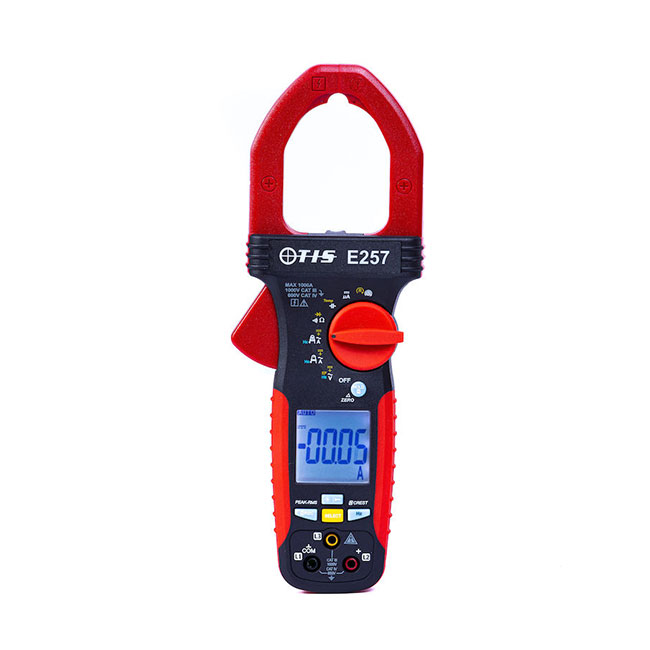Modern electrical testing instruments have been designed to overcome safety issues that existed with traditional testing techniques, and to make the testing process much more practical and efficient, and the clamp meter is the perfect example of this.
What is a clamp meter?
A clamp meter is a type of multi-meter which is primarily used for the safe and convenient testing for current flow in live circuits and conductors, such as wires and cables. Most modern clamp meters are digital and are hand-held instruments made up of integrated hinged jaws which are used to detect the magnetic field produced by a current and give an immediate current reading on an LCD display. In addition to AC and DC current and AC and DC voltage, most clamp meters can also measure resistance, continuity, frequency & test diodes.
What does a clamp meter consist of?
Current clamp meters are made up of:
- A pair of hinged jaws
- A trigger to open and close the jaws
- A power switch
- An LCD screen with backlight
- Positive and negative terminals
- Operation buttons
- Rotary dial to select different measurement modes
How do clamp meters work?
The hinged jaws of a clamp meter open and close so that they can effectively be wrapped around a live conductor and measure the current without touching it. This non-contact measurement of current and voltage is much safer and faster than previous methods which are now obsolete. In the past, an electrical tester would have to shut off a circuit, cut into a wire and use test leads to directly connect with a conductor, in order to measure the current flow and voltage. Using a clamp meter enables the tester to take this measurement without disconnecting the circuit, meaning the process is quicker for the tester and there is no downtime/loss of power in the process being tested or damage to wires.
It is important for safety reasons that the conductors being tested are properly insulated and you cannot use this testing method directly on live un-insulated conductors, but essentially a sensor in the clamp meter detects the magnetic field being produced by a current and translates this into a simple digital reading for the user. So the user process is:
- Switch the instrument on
- Select either AC or DC on the measurement dial
- Open the jaws and place them around the conductor being measured at any point in the system
- Close the jaws and ensure the instrument and the conductor are level and aligned with each other to enable an accurate reading
- Note the current reading displayed
Where would a current clamp meter be used?
Current, voltage, resistance and continuity of conductors is needed to be measured in many different environments. The clamp meter ensures this can be done safely, conveniently and efficiently for installations but also for troubleshooting to identify problems. The clamp meter is therefore typically most popular in:
- Commercial, industrial and residential circuit testing and installations, such as HVAC systems
- Repairing and servicing systems
- Scheduled and preventive maintenance
- Electrical engineering training
The TIS range of current clamp meters
Test Instrument Solutions have a range of digital clamp meters which are adaptable to suit all testing needs and environments. There are instruments for earth leakage and pocket-sized instruments for more convenience and practicality. There are also premium quality instruments which measure using TRMS for greater accuracy.
Clamp meter product demonstration video
TIS 570 AC/DC earth leakage clamp meter overview and demo can be seen below:
Please note that this section is for information purposes only. Anyone using equipment referred to in this section must be suitably qualified and/or experienced within the respective field. If in doubt before use, please consult a qualified electrician or engineer & thoroughly read all instruction booklets.